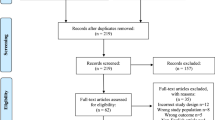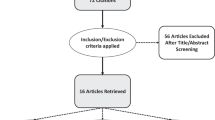Abstract
There is an urgent need to elucidate the mechanistic basis of chronic prostatitis/chronic pelvic pain syndrome (CP/CPPS), as the current methods of symptom-based diagnosis and treatment have failed. Here, we propose a phenotyping system that bridges the gap between the symptom-based diagnosis and treatment of the present and the mechanistic approach of the future. Our phenotyping system uses the Chronic Prostatitis Collaborative Research Network (CPCRN)-recommended algorithm in combination with the NIH Chronic Prostatitis Symptom Index (NIH-CPSI) as a basis for diagnosis, while incorporating novel domains for quantitative assessment and stratification of CP/CPPS patients. We believe this novel system will serve to help advance our understanding of the roles of the patient's genome and proteome in the etiology of CP/CPPS. We predict that, as we begin to understand the mechanistic basis of CP/CPPS pathology and progression, we will develop specific treatments that will aim to cure the disease, rather than merely quell the symptoms.
This is a preview of subscription content, access via your institution
Access options
Subscribe to this journal
Receive 12 print issues and online access
$209.00 per year
only $17.42 per issue
Buy this article
- Purchase on Springer Link
- Instant access to full article PDF
Prices may be subject to local taxes which are calculated during checkout


Similar content being viewed by others
References
Krieger, J. N., Nyberg, L. Jr & Nickel, J. C. NIH consensus definition and classification of prostatitis. JAMA 282, 236–237 (1999).
Collins, M. M., Stafford, R. S., O'Leary, M. P. & Barry, M. J. How common is prostatitis? A national survey of physician visits. J. Urol. 159, 1224–1228 (1998).
Calhoun, E. A. et al. The economic impact of chronic prostatitis. Arch. Intern. Med. 164, 1231–1236 (2004).
McNaughton Collins, M. et al. Quality of life is impaired in men with chronic prostatitis: the Chronic Prostatitis Collaborative Research Network. J. Gen. Intern. Med. 16, 656–662 (2001).
Propert, K. J. et al. Design of a multicenter randomized clinical trial for chronic prostatitis/chronic pelvic pain syndrome. Urology 59, 870–876 (2002).
Pontari, M. A. & Ruggieri, M. R. Mechanisms in prostatitis/chronic pelvic pain syndrome. J. Urol. 172, 839–845 (2004).
Rodriguez, M. A. et al. Evidence for overlap between urological and nonurological unexplained clinical conditions. J. Urol. 182, 2123–2131 (2009).
Litwin, M. S. et al. The National Institutes of Health chronic prostatitis symptom index: development and validation of a new outcome measure. Chronic Prostatitis Collaborative Research Network. J. Urol. 162, 369–375 (1999).
Alexander, R. B. et al. Ciprofloxacin or tamsulosin in men with chronic prostatitis/chronic pelvic pain syndrome: a randomized, double-blind trial. Ann. Intern. Med. 141, 581–589 (2004).
Nickel, J. C. et al. Alfuzosin and symptoms of chronic prostatitis-chronic pelvic pain syndrome. N. Engl. J. Med. 359, 2663–2673 (2008).
Shoskes, D. A., Nickel, J. C., Dolinga, R. & Prots, D. Clinical phenotyping of patients with chronic prostatitis/chronic pelvic pain syndrome and correlation with symptom severity. Urology 73, 538–542 (2009).
Nickel, J. C. & Shoskes, D. Phenotypic approach to the management of chronic prostatitis/chronic pelvic pain syndrome. Curr. Urol. Rep. 10, 307–312 (2009).
Shoskes, D. A., Nickel, J. C. & Kattan, M. W. Phenotypically directed multimodal therapy for chronic prostatitis/chronic pelvic pain syndrome: a prospective study using UPOINT. Urology 75, 1249–1253 (2010).
Nickel, J. in Campbell-Walsh Urology 9th edn (eds. Wein, A. J. et al.) 312–314 (Saunders, Philadelphia, 2007).
Nickel, J. C. Clinical evaluation of the man with chronic prostatitis/chronic pelvic pain syndrome. Urology 60, 20–22; discussion 22–23 (2002).
Latremoliere, A. & Woolf, C. J. Central sensitization: a generator of pain hypersensitivity by central neural plasticity. J. Pain 10, 895–926 (2009).
Scholz, J. & Woolf, C. J. The neuropathic pain triad: neurons, immune cells and glia. Nat. Neurosci. 10, 1361–1368 (2007).
Woolf, C. J. & Ma, Q. Nociceptors—noxious stimulus detectors. Neuron 55, 353–364 (2007).
Costigan, M., Scholz, J. & Woolf, C. J. Neuropathic pain: a maladaptive response of the nervous system to damage. Annu. Rev. Neurosci. 32, 1–32 (2009).
Patapoutian, A., Tate, S. & Woolf, C. J. Transient receptor potential channels: targeting pain at the source. Nat. Rev. Drug Discov. 8, 55–68 (2009).
Nickel, J. C. et al. Intravesical alkalinized lidocaine (PSD597) offers sustained relief from symptoms of interstitial cystitis and painful bladder syndrome. BJU Int. 103, 910–918 (2009).
Anderson, R. U., Orenberg, E. K., Morey, A., Chavez, N. & Chan, C. A. Stress induced hypothalamus–pituitary–adrenal axis responses and disturbances in psychological profiles in men with chronic prostatitis/chronic pelvic pain syndrome. J. Urol. 182, 2319–2324 (2009).
Lutgendorf, S. K. et al. Diurnal cortisol variations and symptoms in patients with interstitial cystitis. J. Urol. 167, 1338–1343 (2002).
McEwen, B. S. & Kalia, M. The role of corticosteroids and stress in chronic pain conditions. Metabolism 59 (Suppl. 1), S9–S15 (2010).
Ganzel, B. L., Morris, P. A. & Wethington, E. Allostasis and the human brain: integrating models of stress from the social and life sciences. Psychol. Rev. 117, 134–174 (2010).
Dimitrakov, J. et al. Adrenocortical hormone abnormalities in men with chronic prostatitis/chronic pelvic pain syndrome. Urology 71, 261–266 (2008).
Nimkarn, S. & New, M. I. Congenital adrenal hyperplasia due to 21-hydroxylase deficiency: a paradigm for prenatal diagnosis and treatment. Ann. NY Acad. Sci. 1192, 5–11 (2010).
Cohen, H., Neumann, L., Glazer, Y., Ebstein, R. P. & Buskila, D. The relationship between a common catechol-O-methyltransferase (COMT) polymorphism val(158)met and fibromyalgia. Clin. Exp. Rheumatol. 27 (5 Suppl. 56), S51–S56 (2009).
Tegeder, I. et al. GTP cyclohydrolase and tetrahydrobiopterin regulate pain sensitivity and persistence. Nat. Med. 12, 1269–1277 (2006).
Ross, S. E. et al. Loss of inhibitory interneurons in the dorsal spinal cord and elevated itch in Bhlhb5 mutant mice. Neuron 65, 886–898 (2010).
Patte-Mensah, C. et al. Neurogenic pain and steroid synthesis in the spinal cord. J. Mol. Neurosci. 28, 17–31 (2006).
Schaeffer, V., Meyer, L., Patte-Mensah, C. & Mensah-Nyagan, A. G. Progress in dorsal root ganglion neurosteroidogenic activity: basic evidence and pathophysiological correlation. Prog. Neurobiol. 92, 33–41 (2010).
Savoye-Collet, C., Koning, E. & Dacher, J. N. Radiologic evaluation of pelvic floor disorders. Gastroenterol. Clin. North Am. 37, 553–567 (2008).
Siddall, P. J. et al. Magnetic resonance spectroscopy detects biochemical changes in the brain associated with chronic low back pain: a preliminary report. Anesth. Analg. 102, 1164–1168 (2006).
Kuchinad, A. et al. Accelerated brain gray matter loss in fibromyalgia patients: premature aging of the brain? J. Neurosci. 27, 4004–4007 (2007).
Schmidt-Wilcke, T. et al. Striatal grey matter increase in patients suffering from fibromyalgia—a voxel-based morphometry study. Pain 132 (Suppl. 1), S109–S116 (2007).
Dunckley, P. et al. Cortical processing of visceral and somatic stimulation: differentiating pain intensity from unpleasantness. Neuroscience 133, 533–542 (2005).
Schaeffer, A. J., Parks, E. L. & Apkarian, A. V. Brain Activity for spontaneous fluctuations of pain in urologic pelvic pain syndrome [abstract]. J. Urol. 181 (Suppl. 4), 121 (2009).
Bjerklund Johansen, T. E. & Weidner, W. Understanding chronic pelvic pain syndrome. Curr. Opin. Urol. 12, 63–67 (2002).
Katsnelson, A. Researchers probe the real effect of placebos. Nat. Med. 11, 105 (2005).
Finniss, D. G., Kaptchuk, T. J., Miller, F. & Benedetti, F. Biological, clinical, and ethical advances of placebo effects. Lancet 375, 686–695 (2010).
Benedetti, F., Amanzio, M. & Maggi, G. Potentiation of placebo analgesia by proglumide. Lancet 346, 1231 (1995).
D'Agostino, R. B. Sr. The delayed-start study design. N. Engl. J. Med. 361, 1304–1306 (2009).
Colloca, L., Lopiano, L., Lanotte, M. & Benedetti, F. Overt versus covert treatment for pain, anxiety, and Parkinson's disease. Lancet Neurol. 3, 679–684 (2004).
Author information
Authors and Affiliations
Contributions
All authors contributed equally to researching data for the article, discussing its content, writing and review/editing of the manuscript before publication.
Corresponding author
Ethics declarations
Competing interests
The authors declare no competing financial interests.
Rights and permissions
About this article
Cite this article
Allsop, S., Erstad, D., Brook, K. et al. The DABBEC Phenotyping System: towards a mechanistic understanding of CP/CPPS. Nat Rev Urol 8, 107–113 (2011). https://doi.org/10.1038/nrurol.2010.227
Published:
Issue Date:
DOI: https://doi.org/10.1038/nrurol.2010.227
This article is cited by
-
Urologic chronic pelvic pain syndrome: insights from the MAPP Research Network
Nature Reviews Urology (2019)
-
The Role of Phenotyping in Chronic Prostatitis/Chronic Pelvic Pain Syndrome
Current Urology Reports (2011)



